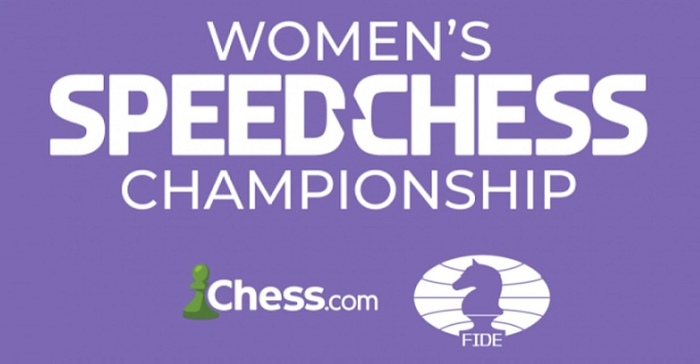Chess in Schools Survey 2020: First conclusions and takeaways

In the summer of 2020, FIDE and the ECU joined forces to take a survey on what Chess in Schools (CiS) looks like in the world. The information gathered would inform the next step, that of suggesting an operational, marketing, and financial plan for FIDE for Chess in Schools for 2021-2025. The group working with the survey, people from FIDE, ECU, and the Armenian Institute, chose the broader definition of Chess in Schools: chess in a school environment. All 190 federations under the umbrella of FIDE were contacted, as well as major CiS – organisations, and asked to complete a survey of 17 questions in Survey Monkey to get a statistical foundation. The next steps were to structure the statistics, make a report, select especially interesting countries and projects, and make interviews with those involved to get a deeper understanding. This final report will be presented in a seminar that includes the supervisory group of the project as well as members of FIDE EDU and ECU EDU. After that, the survey report will be given to a group responsible for creating the strategic plan for FIDE EDU for 2021-2025. This survey is likely the largest of its kind with 196 respondents, out of which were 135 federations, 39 CiS-organisations, and 22 private and public schools. According to the survey, currently, there are 25,600,000 children participating in chess activities in a school environment. Of that number, 15,000,000 of them are children in India, 5,000,000 in China, and 5,600,000 from the rest of the world. There are 92,550 schoolteachers and 145,690 instructors from outside the school providing chess instruction and programming around the world. Overview of Responses Number of Responses 196 Number of Countries Responding 152 Number of Federations/Countries Not Responding 42 Number of Students Participating in Some Form of Chess Activity in a School Setting About 25,373,339* Number of Countries with More Than 10000 Children Participating in Some Form of Chess Activity in a School Setting 37 Number of Teachers About 92,550 Number of Chess Coaches About 145,690 Number of Countries Using Software 98 Number of Countries with Qualifications for Teaching Chess in Schools 78 Number of Countries That Used Official Data to Estimate the Facts They Provided in This Survey 44 Number of Countries That Used Data from Research to Estimate the Facts They Provided in This Survey 20 * We should take into account that the vast majority of children participating in chess instruction in school are from India and China. 15,000,000 according to the survey response from India. 5,000,000 according to the survey response from China. It is important to note that the data collected is not precise from the standpoint of a researcher conducting a rigorous scientific study. Responders to the survey often offered their best guesses as to the state of chess in education in their country. Many of these estimates are likely to be underestimated while a few may be inflated. Still, the survey does represent a good first glimpse of the worldwide state of chess in schools. Based on the data obtained, the respondents consider FIDE as the main sponsor for the development of the chess education model. For Institutionalized (centralized with support and recognition from the government, often compulsory, with a national curriculum) and Diversity (decentralized with a variety of ways in how chess is used and how chess instruction is given ) models, FIDE’s potential for helping with the development of chess education is considered in the area of the development of support for teachers’ training. This help may include the following: Provision of feedback to teachers Identification of teachers’ needs and suggestions, for example, organizing a forum for the exchange of ideas between schoolteachers Promotion of outstanding teachers of the world and their involvement in the process of introducing educational chess Introduction of preschool chess education Identification of reference schools with good chess teaching practices and disseminating their experience Distribution of training materials, advertising brochures, videos in different languages Respondents pointed out the need to work with national governments to spread chess education and sponsor teacher training as well as to build bridges between educational and sport chess. The issue of the necessity for certification was perceived ambiguously by different respondents. The issue of certification, in the opinion of some respondents, should be assigned to the national Ministries of Education. In some cases, there was a proposal of the necessity for additional interaction between FIDE and local state bodies in order to avoid conflicts that could hinder the development of chess education (Singapore). The Diversity Model was characterized by an emphasis on material assistance, for example, in sponsoring technical means to conduct online classes with outstanding teachers (India). Helping disadvantaged Asian and African countries, as well as a desire for help in transferring educational excellence, was noted in China. For the Less Institutionalized Model (the countries with either underdeveloped chess in schools’ movements struggling with little or no funding or no federation involvement or centralization), the following suggestions were more relevant: Lobbying the government to recognize chess as a school subject (including at the European Union level) Accreditation of training courses Development of publicly available training programs Provision of training courses online Help in popularizing chess, advertising for teachers, schools, politicians Holding a conference with UNESCO for politicians, educators’ organizations and others Financial support Model of Chess Education in Countries That Participated in Follow-up Interviews Institutionalized Model Diversity Model Less Institutionalized Model* Andalusia (Spain) Buenos Aires, (Argentina) Finland Aragon (Spain) San Luis (Argentina) France Armenia Andorra England Catalonia (Spain) India USA Santa Fe (Argentina) China Zambia Uruguay Singapore Iceland Sweden FIDE-ECU CiS Survey Final Report (pdf)
FIDE’s EDU accelerates provision of training for lecturers and teachers

The Preparation of Lecturers course leads to the diploma of Chess in Education Lecturer and is intended primarily for those who will lecture to teachers in order to swell the number of teachers in the world who can teach educational chess. The course hones their existing skills and opens new vistas for those from the chess world without educational background. The second course for lecturers will be held online from 18-20 June. Would-be lecturers are invited to complete and return the registration form. There are limited places, distributed on a first-come, first-served basis, but over subscribers are placed on the waiting list for the next course. The Preparation of Teachers course leads to the FIDE title of School Instructor. This course is intended for those at the sharp end of teaching chess in an educational way. The next course, also the second, will be held at the beginning of July (2-4). Those who would like to develop new skills in this area and gain the title are invited to complete and return the registration form. This course is limited to 30 places, distributed on a first-come, first-served basis, but over subscribers are placed on the waiting list for withdrawals or the next course. All courses are in English (other languages will be added soon) and currently run Friday-Sunday inclusive 15:00-20:00 CET. Our dedicated Chess in Education website has further details.
Cori and Gunina qualify for Main Event

GM Valentina Gunina (RUS) defeated IM Meri Arabidze (GEO) in Qualifier VIII (3+1) for the 2021 Women’s Speed Chess Championship. Valentina’s grit and determination paid off as she secured the last spot in the main event after playing for more than nine hours straight – she lost in the final of Qualifier VII (1+1), which took earlier in the day and saw the victory of WGM Deysi Cori from Peru. “It was fun. I feel really exhausted but it was fun. I could not control my nerves in the first qualifier, and I did not make it then… And now I am going to sleep” said Valentina in a short interview after her marathon playing session. Now the qualifiers will be joined by eight invited players to compete in the 2021 Women’s Speed Chess Championship Main Event. The round of 16 starts on June 10. The FIDE Chess.com 2021 Women’s Speed Chess Championship is an online competition for titled female players. The qualifiers for the event will happen from May 28-June 6, while the main event runs from June 10 to July 3. Players will battle for their share of a total prize fund of $66,000. Fans can follow the FIDE Chess.com Women’s Speed Chess Championship by watching the live broadcast with expert commentary on Chess.com/TV and Chess.com’s Twitch channel. They will also be able to enjoy the event through Chess.com’s Events page (https://www.chess.com/events). More info and a full schedule of the FIDE Chess.com Women’s Speed Chess Championship can be found here.

